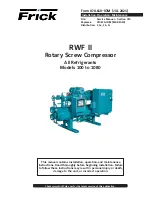
- 15 -
SPECIFIC SAFETY PRECAUTIONS
Batteries
When servicing batteries, always wear
protecting clothing and glasses.
1 The electrolyte in batteries is a
sulphuric acid solution which is fatal if
it hits your eyes, and which can cause
burns if it contacts your skin. Therefore,
be careful when handling batteries, e.g.
when checking the charge condition.
2 Install a sign prohibiting fire, open
flame and smoking at the post where
batteries are being charged.
3 When batteries are being charged, an
explosive gas mixture forms in the cells
and might escape through the vent holes
in the plugs. Thus an explosive
atmosphere may form around the
battery if ventilation is poor, and can
remain in and around the battery for
several hours after it has been charged.
Therefore:
- never smoke near batteries being, or
having recently been, charged,
- never break live circuits at battery
terminals, because a spark usually
occurs.
4 When connecting an auxiliary battery
(AB) in parallel to the unit battery (CB)
with booster cables: connect the + pole
of AB to the + pole of CB, then connect
the - pole of CB to the mass of the unit.
Disconnect in the reverse order.
Pressure vessels
Maintenance/installation requirements:
1 The vessel can be used as pressure
vessel or as separator and is designed to
hold compressed air for the following
application:
- pressure vessel for compressor,
- medium AIR/OIL,
- and operates as detailed on the data
plate of the vessel:
- the maximum working pressure ps in
bar (psi),
- the maximum working temperature
Tmax in °C (°F),
- the minimum working temperature
Tmin in °C (°F),
- the capacity of the vessel V in l (US
gal, Imp gal, cu.ft).
2 The pressure vessel is only to be used
for the applications as specified above
and in accordance with the technical
specifications. Safety reasons prohibit
any other applications.
3 National legislation requirements with
respect to re-inspection must be
complied with.
4 No welding or heat treatment of any
kind is permitted to those vessel walls
which are exposed to pressure.
5 The vessel is provided and may only be
used with the required safety equipment
such as manometer, overpressure
control devices, safety valve, etc.
6 Draining of condensate shall be
performed daily when vessel is in use.
7 Installation, design and connections
should not be changed.
8 Bolts of cover and flanges may not be
used for extra fixation.
9 (Pressure) vessel maintenance is to be
performed by Atlas Copco.
Summary of Contents for XAHS 186 Cud PNE
Page 1: ...Instruction Manual for Portable Compressors English XAHS 186 Cud PNE Engine 6BT5 9 ...
Page 2: ......
Page 19: ... 19 Main parts ...
Page 21: ... 21 REGULATING SYSTEM OVERVIEW ...
Page 25: ... 25 ELECTRIC SYSTEM Circuit Diagram ...
Page 26: ... 26 Wiring Diagram ...
Page 27: ... 27 ...
Page 49: ... 49 Adjustments and servicing procedures ADJUSTMENT OF THE CONTINUOUS REGULATING SYSTEM ...
Page 69: ......
Page 70: ......
















































